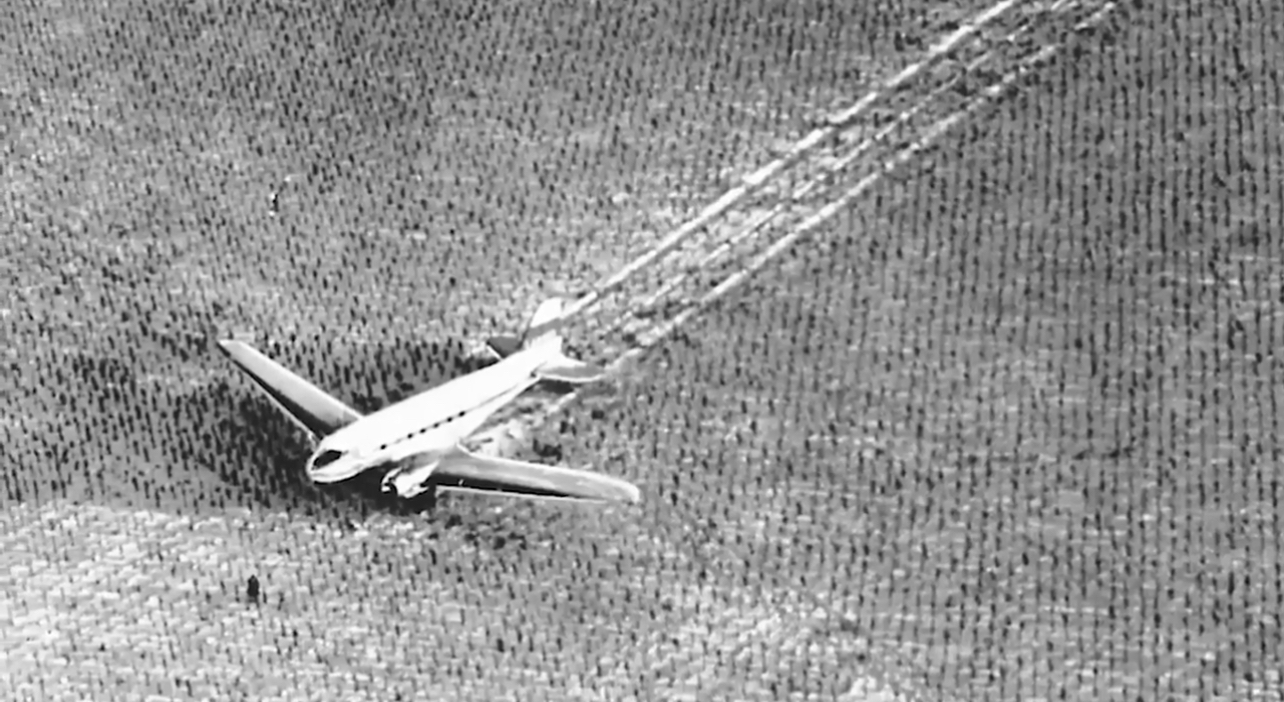If you're ever flying low over the town of Carroll, in western Iowa, look down.
You might catch a flash of purple and gold - painted across an outdoor basketball court trimmed in powder blue. To most, it’s just a pop of unexpected color in a small Midwest town. But to those who know the story, that court marks the site of one of the most remarkable near misses in sports history.
On January 17, 1960, the Minneapolis Lakers—then led by future Hall of Famer Elgin Baylor—were flying home after a Sunday night loss to the St. Louis Hawks. The team had boarded a Douglas DC-3 plane, a model built in the 1930s and purchased by then Lakers owner Bob Short in a budget-saving move to keep the struggling franchise alive.
Soon after take-off from Lambert Field in St. Louis, something went wrong. The plane lost all electrical power, no instruments, no communication, and no way to navigate through the thickening winter storm. Snow had swept across the sky. Ice began forming on the wings. Snow swallowed the windows. The storm intensified quickly. The skies over Iowa became a blind man’s maze.
At the controls was 36-year-old Harold Gifford, a World War II veteran of the U.S. Army Air Forces whose calm-under-pressure demeanor would prove lifesaving. With no ability to gauge altitude or weather, and unsure of their location, Gifford made a bold decision: he would descend, hoping to spot the ground through the snow and fog.
As chronicled in the Westward podcast series in 2021, the players in the cabin knew things were bad. Some began writing messages to their families, notes they folded into signed life insurance forms and pushed through cracks in the windows, hoping someone below might find them if the worst happened. According to Gifford’s recollections shared in interviews over the years, the silence on board was deafening.
Meanwhile, the town of Carroll was sound asleep. That is, until the sound of low-flying engines woke residents from their beds. People stepped outside and looked up into the stormy dark, hearing what sounded like a plane circling overhead, again and again.
As word of the circling plane spread, local radio stations alerted the community. Residents turned on their porch lights to help the pilots see the town. Others jumped into their cars and rushed toward the edge of town. They lined up along the snow-covered fields, pointing their headlights skyward, hoping to give the pilot a guiding glow through the blizzard.
Gifford spotted a small town below. He didn’t know it was Carroll, but saw porch lights and rooftops. He scanned the outskirts and found what looked like a clearing. A cornfield. It was the only chance they had.
With barely enough fuel and no clear runway, Gifford brought the plane down. It slammed through the frozen field, the corn acting as a cushion. When the wheels finally stopped, there was a moment of stunned silence.
Then the sound of car horns. Shouts. Cheers.
There was no playbook for what happened that night. No buzzer-beater or game plan. Just instinct and kindness.
A tragedy had been averted. And unknowingly, so had perhaps the fate of the NBA itself.
Elgin Baylor was already the face of the league. Jerry West, who would join the Lakers the following season, wasn’t on the flight that night, but if the plane had gone down, the loss of the Lakers could have sunk a league that had not yet found its financial footing. There were no global television deals in 1960. No billionaire owners. Just a few franchises, some stars, and a dream.
Today, the stalks are gone, replaced by a court in shades of royalty. The Lakers franchise donated funds to the Carroll Chamber of Commerce in 2010 to help build a commemorative outdoor basketball court on the site of the emergency landing. Sneakers now echo where wheels once scraped frozen soil.
Constructed with all-weather tiles, “Laker Court” features the gold and purple of the current Lakers, bordered in sky blue as a salute to their Minneapolis-era legacy.
Although time has passed, the court still speaks.
It’s a reminder of a long January night in 1960 - the people of Carroll standing in the snow, staring upward, thinking of their heroes above. While those above, clinging to hope in the storm, looked down and saw headlights and porch lights cutting through the darkness and thought of their heroes below, guiding them home.
It speaks of a night when basketball came down from the sky, and small-town Iowa rose up to catch it.
 |
| Image: City of Carroll |



No comments:
Post a Comment